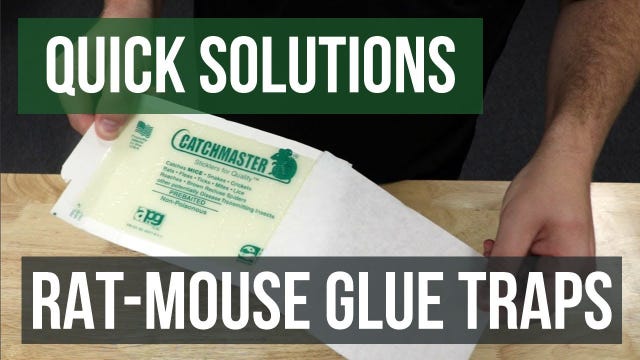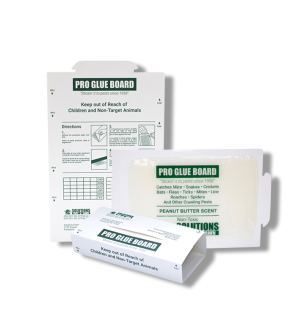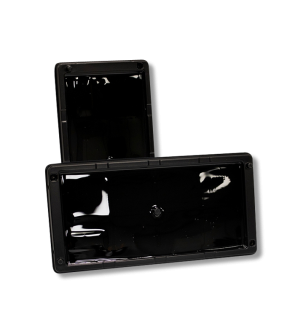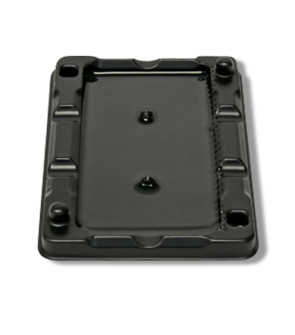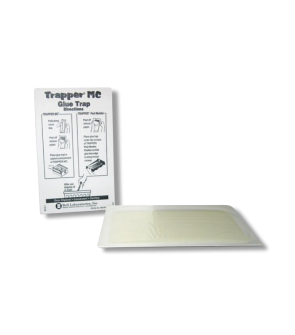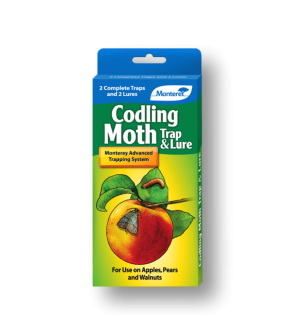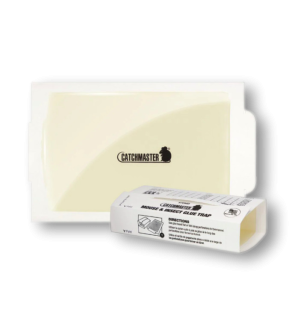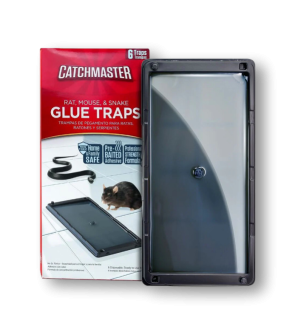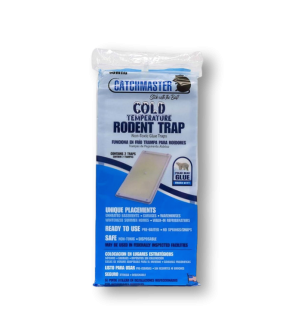Gain access to personalized product screening, the best pricing, rewards, and more!
Most Effective Products
Glue Trapping
When there is a rodent problem in the home, it can be quite difficult to manage. Rats and mice are quick and can fit in the tightest of cracks and holes to evade capture. While snap trapping is one common way to control rodents, it’s not for everyone due to the gruesome and lethal outcome. As an alternative to this, glue trapping is a common and highly effective method of putting a stop to rodents wreaking havoc in the home.
Solutions Pest & Lawn has several professional quality glue traps that can capture and subdue even the fastest and most crafty rodents. On this page, you will learn about glue trapping, the pros and cons of using glue traps, and how to apply snap traps around your home to treat rodents properly. You can also shop for our inventory's best rat and mouse snap traps.
What Is A Glue Trap?
A glue trap is a trapping method that involves the use of a sticky adhesive applied to a flat surface, such as a piece of cardboard, plastic trays, or similar material specially designed to capture pests. While meant to capture rodents, glue traps are a pretty universal method of pest control and are used to capture other intruders like cockroaches, spiders, caterpillars, etc.
Glue traps, for the most part, don’t result in the immediate death of the captured pest, and they also don’t involve the use of toxic chemicals, which could be risky.
Glue traps are easy to use and apply around the home. Simply placing the traps flush against a wall where rodents or insects have been active and laying out a bait on the trap itself will lure an unsuspecting pest to the trap without them realizing the trap's intent to capture them. As soon as the rodent comes in contact with the glue, it becomes entangled and unable to free itself.
Conditions For Using Glue Traps
Glue traps can be used in food plants, kitchens, restaurants, food processing plants, hospitals, residences, zoos, and other sensitive areas where poison is prohibited or discouraged.
Customers who prefer glue traps often do so because they are relatively cheap, quick, and easy to use. They are also able to capture mice, rats, or other insects that have infested their homes or places of business.
Using glue traps to monitor and check whether you have a pest problem is also good. It can be hard to go on the hunt and inspect for pests, so glue traps often capture the offending pests so you can dispose of them as you wish.
Benefits of Glue Traps
Glue traps are nontoxic and do not require poisons or chemicals. They are cheaper than snap traps, but unlike snap traps, they are only good for one use (or one mouse).
Glue traps (like snap traps) hold the dead mouse, so there is no worry about mice dying and smelling in hidden places. You can easily dispose of the dead mice by trapping them together, wrapping them, and putting them in the garbage.
You don’t have to clean, reset, or re-bait glue traps. You can usually cut or fold them to fit into tight places.
Drawbacks of Glue Traps
When you check the traps you have placed after a few days, there is always the chance that a trapped mouse or rat will die and not yet die, which may be unpleasant for some people. Sometimes a glue trap may be ineffective and a rodent might escape, most notably a rat. Rats are more likely to escape glue boards than mice since they are bigger, especially if they do not get all 4 feet on the trap.
Our Recommendations
Solutions Pro Glue Board - Solutions Pro Glue Boards have a signature high-quality adhesive and a peanut butter fragrance. They work both indoors and outdoors for mice, fruit flies, moths, and many other insects and reptiles, such as lizards. Measuring 5" by 8", these boards can lay flat or be folded into a square box.
Solutions Pro Glue Tray - Solutions Pro Glue Trays are a great product for capturing rats or mice. They contain a powerful adhesive and are great for indoor and outdoor use. Placing some attractant on each glue tray is highly recommended. Each Solutions Pro Glue Tray package contains two glue trays.
Tools Needed
There are no tools needed to use a glue trap, as it comes ready to use. However, gloves are recommended to hide human scent and prevent any glue adhesive from getting on your fingers.
User Guide

Glue traps conveniently come ready to use and are easy to apply indoors.
Step 1: Glue Trap Setup
Take the glue trap out of its packaging. Remove the protective paper by gripping one corner and pulling in one smooth, continuous motion.
Step 2: Glue Trap Placement
Position traps along active rodent runways, such as walls, under large kitchen appliances, in cupboards, and other areas where rodents travel. Be sure to flush the glue trap against a wall where rodents will run over and stick to it.
Step 3: Dispose of The Trap and Rodent
After the offending pest has been captured, dispose of the trap and capture rodents or insects in the trash.
Key Takeaways
What is Glue Trapping?
- A glue trap is a trapping method that involves applying adhesive to a flat surface specially designed to capture pests.
How To Use Glue Traps
- Glue traps are best used in areas where poison is prohibited or discouraged, such as kitchens or hospitals.
Glue Trap Placement
- Position traps along active rodent pathways, such as walls, under or near appliances, behind furniture, and other active areas.






